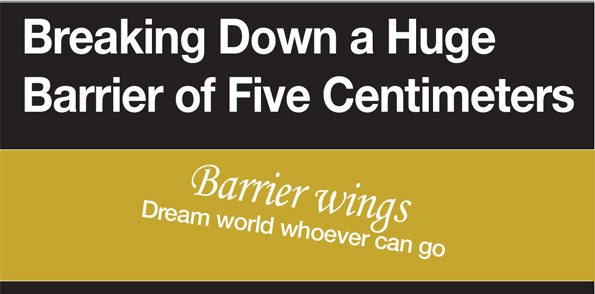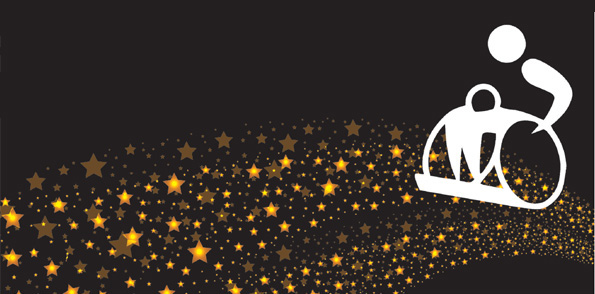Isn’t there a place people dream of going? Such a wish is no longer a dream with the development of transportation. If there are places where you want to go, such as seas, famous cities, etc., you can simply get to there by transportation. However, there are some people who cannot easily go to the shops in front of their homes. The stairs can be a huge barrier for those who use wheelchairs. Moreover, for those who are blind, their daily schedules depend on the announcement of buses. Are the disabled in our society really using transportation without inconveniences? -Ed.
According to the Ministry of Land, Infrastructure and Transport, about 13,200,000 people, accounting for 25.7 percent of the total population, were not able to effectively use public transportation in 2016. The satisfaction level of the transportation facilities scored 63 of 100 in a survey of the physically-challenged. What they indicated as the most urgent issue is to improve the superannuated local bus terminals and bus stops. Also, the airlines do not offer boarding bridges for the disabled and refuse their boarding. The airlines also tell them to use other high-priced airlines. Also, ‘the standard fitting installation rate’, which means to check if the facilities were installed properly for the people who have difficulty moving by themselves, stands at 72.5%. However, since most welfare facilities are skewed towards the metropolitan area, the level for local transportation facilities is lower. In particular, the satisfaction rate of transport facilities in the Gyeongsang Province was 53 points, the lowest rank. This means that the handicapped people in rural areas are experiencing a lot of inconvenience from the transportation facilities.
Local governments are trying to improve the mobility for people who cannot easily move. Among them, the Cheongju Movement Support Center for the Disabled and the Support Center for the Disabled in CBNU are providing mobility devices for the disabled students of CBNU. Lee Yang-sook, an employee of the Support Center for the Disabled in CBNU, said, “Our support center started in 2005 and currently is supporting most of the disabled students. The purpose of our support center is to ensure that students and faculty members do not feel inconvenience from facilities. In particular, the disabled students are able to get help from the support center after arriving at school. Also, we cooperate with the facilities division to install stairs with ramps for students who cannot use stairs. Currently, we are dealing with welfare policies for people who are blind as well as those who are deaf.”
There are people as well as local governments who are trying to improve the mobility of the disabled. The Social Venture Company, nicknamed Barrier Wings, has developed an app called ‘Can-go’ to create a society without barriers for anyone who wants to move anywhere. The name ‘Can-go’ means anyone can go anywhere, and it provides barrier-free information and maps for the disabled in our society. It is operated using crowdsourcing, so it is very convenient for anyone who wants to post or share information. Moreover, the joint leader, who developed the app, conducted a project to set up ramps at the entrances to stores for free. However, only 35 of the 100 stores agreed to do it, and some of them even said they did not treat the disabled as guests. Although the efforts to secure the mobility of the disabled are proceeding positively, it will still take a lot of time.
Cho Woo-ri, a representative of the disabled culture group named Noriter, said, “When I used the low-floor bus, I felt like I became a member of this society. Also, there are call-taxis for the disabled, and if you need to catch a taxi, you should make a reservation in advance because you can’t use it when you are in an urgent situation.” She added, “We have to contact the call-taxi owner whenever we use the service, and the number of cabs for the disabled is too low.” She also mentioned examples of good welfare facilities for the disabled at her alma mater, CBNU. “When I went to school, it lacked transportation facilities and policies, but now it has changed a lot. I was impressed by the ‘man to man helper service’ that helps the disabled and other personalized services too, but I still felt sorry about the joint lecture rooms, not the sloped ones but the ones with stairs. However, as opposed to the past, the library has been much improved, so it has become more convenient for disabled students, and the number of elevators on campus has increased. It was noticeable that the people of CBNU were trying to care for the disabled.”
It is not that the level of domestic welfare is poor, but the number of facilities is low when compared to other countries, so adopting good transportation policies from other countries will improve the quality of their lives. In the United States, in 1990, the Americans with Disabilities Act of 1990(ADA) was enacted for the enactment of a bus service called Metro Access. Wheelchair-accessible buses are now operated 24 hours a day, so they can be used easily. The merits of the buses are that all buses are low-floor buses and the bus drivers are responsible for helping the wheelchair users to board the bus. In addition, if a wheelchair is deemed to be unfixed, the bus driver needs to provide a supplementary safety belt. Also, if car drivers are disabled or old, they have to acquire a wheelchair mark on the license plate in order to notify other drivers. The Bus Management System and the Transportation Welfare System of the U.S. are quite different from ours, but they are welfare policies that might work in Korea.
Now, people can go anywhere in the world. We can even chat in real time with people on the opposite side of the globe through cell phones, and traveling around the world can be done with a single click. However, just because someone is sitting in a wheelchair, it doesn’t mean people have to forsake this freedom. In the future, everyone will be able to go places once the mobility rights are guaranteed.
By Kim Jae-wan
jw37@cbnu.ac.kr
By Nam Min-woo
mw38@cbnu.ac.kr



 All
All Feature
Feature






 Kim Jae-wan & Nam Min-woo
Kim Jae-wan & Nam Min-woo











